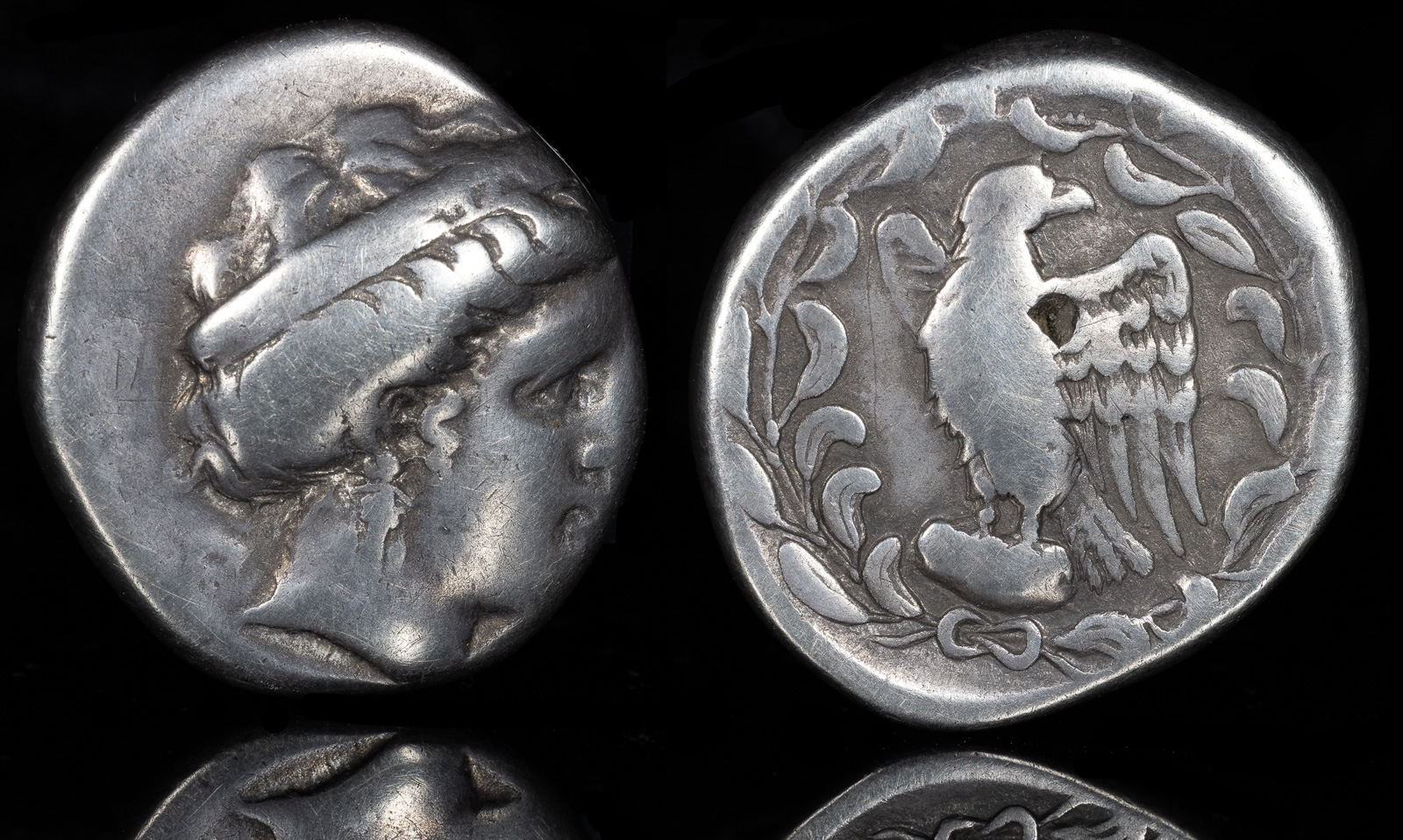
ELIS, Olympia. 111th Olympiad
336 BCE
AR Stater 22mm, 11.63 g, 6h
Hera mint. Head of Hera right, wearing ornamented stephanos inscribed [FAΛEI]Ω[N] / Eagle standing left, head right, wings spread, on rock; all within wreath.
Seltman, Temple 341–5 var. (dies FG/–); BCD Olympia 159 (same obv. die); HGC 5, 394.
Nearly the entirety of these coins were used for the Olympic festival and for pilgrims to the two temples, based on the fact that very few large coins of Elis have been found in Olympia. Elis itself was primarily rural with little need for such a vast coinage. At the festivals, visitors were required to convert their currency to the special coins minted for that purpose, with the conversion fee renumerating the Eleans for the upkeep of the games and the temples. Most Olympiads had their own coinage minted for that festival, which explains the large number of varieties. The top engravers in Greece were hired for the purpose. It’s believed that few coins had much purpose save as souvenirs after the festivals, though the existence of countermarks on some coins had led to speculation that coins from previous years were permittable once they were stamped.
This particular coin comes from the Hera mint. Seltman was one of the first to realize that there were two different mints that issued coins simultaneously – called the “Zeus” mint and the “Hera” mint. We don’t know for sure that the mints were based at the corresponding temples, but the entirely separate lineage of dies strongly suggests two separate mints, and these were the two dominant temples at the time.
The Hera temple was the older, having been built roughly a hundred years before that of Zeus, though the Zeus coinage predates that of Hera. Seltman lists the end of the Hera mint around 323 BCE, which of course was the same year Alexander the Great died. The temple itself was destroyed in an earthquake in the 4th century CE, which may have saved its ruins from the fate of the more famous Zeus temple – whose eponymous statue was one of the seven ancient wonders of the world, and was demolished as a pagan relic. Today, the Olympic flame continues to be lit on the ruined Temple of Hera’s altar before being carried to the rest of the world.
Elis and Olympia are actually two separate places, but Elis controlled the mints of Olympia and the Olympiads themselves. This hegemony was disputed with nearby Pisa, but for most of ancient history Elis had the upper hand.
In terms of the symbols on the coin, the eagle is a natural symbol of Zeus. Per Gardner, the symbol of an eagle flying symbolizes Zeus the Cloud-gatherer, while one with a serpent or hare indicates Zeus as the “giver of victory.” This coin shows neither. Instead, the eagle is on a rock with its wings spread. Perhaps this may instead remind the visitors that eagle rising from the altar signified the start of the chariot race, which would have been keen in the minds of the Macedonians – who were the Eleans’ chief benefactors at the time.
The wreath, of course, is what was given to the victors at the games. We all learned that as schoolchildren. As for the image of Hera, interestingly there was a separate Olympic festival for young (unmarried) women called the Heraean Games. Adult women, however, weren’t allowed to even attend the mens’ games, and the Heraean Games seem to have been held shortly before the mens’.
To be honest, while both Leu and CNG state that Seltman assigns this stater to the 111th Olympiad in 336 BCE, from my reading of Seltman I don’t see where he states this. He does confidently mark it as between 364 and 323 BCE, and suggests that it occurred before the last group, which came at the very end of the mint. Four obverse dies are in his series XXX, named FG to FK (this is FG). So, I’ll just defer to CNG and Leu’s experts.
That’s the history, but now comes the fun part: speculation. Who could have touched this coin? The obvious answer is someone who attended the 111th Olympic Games did. This was more likely multiple someones, as the festival was a major market for trading commodities. While we’d like to think someone spent it on popcorn and Cracker Jacks in the stands, or for a Dioxippos action figure to take home to the kids, it was more likely purchased on something from another corner of Greece that wasn’t readily available in the owners’ area. That’s all nice, but given the year, we obviously want to know the odds of Alexander or Philip holding it.
For Philip II, the Olympics were a major vehicle to elevate him to the hegemony of Greece. His chariots won in 356, 352, and 348 and the victories were depicted on his coins. The famous Philippeion, containing statues of Philip, Alexander, and Olympias, was built at Olympia itself. It is believed that Alexander himself never attended the games, but it did use the 114th Olympiad in 324 BCE to announce his exiles decree.
It seems extremely likely that neither Alexander nor Philip attended the 336 BCE games, so my next question was: how likely was it held by one of the attendees of the wedding between Philip‘s daughter and Alexander‘s full sister Kleopatra, and Alexander I of Molossos (Olympia’s brother)? To answer that, we need to look at logistics. The festival was held roughly from August 6th to September 19th. Philip was assassinated at his daughter’s wedding in October. I could find no more precise date there.
Kleopatra and Alexander‘s wedding was a big affair. This was a grand spectacle for Philip II and everyone who was someone throughout Greece was invited. Given that the Olympics were also a big deal, I’m certain that some attended both. From Olympia, had they taken the A5, they would have reached Vergina after 525 km. Therefore, at the leisurely 30 km per day, one could have reached Vergina in 17 days. Had they travelled part of the way by boat or packed lighter, they could have made it in less time. Therefore, it was certainly possible.
One person who was both at the these Games and known to Alexander was the Athenian boxer/wrestler Dioxippos. So feared was he, that no one would oppose him at the Games, so he won by default. He then accompanied Alexander‘s army into Persia. Both Quintus Curtius Rufus and Diodorus recall the bout between him and the Macedonian Coragos. Dioxippos, despite being naked compared to Coragos’ armor, easily dispatched the Macedonian. This stunned the Macedonians, including Alexander, and raised their jealousy to the point that they tried to frame the Greek with theft. Dioxippos, feeling dishonored, wrote a letter explaining his frustrations to Alexander, then committed suicide. Alexander was reported as very distraught over the tragedy.
Sadly, I know nothing about where this coin was found, so this is only speculation. The coin is well-worn, so it definitely had a history after the Games. In the center of the obverse is a test cut. When seen with the naked eye, it looks more like a hole – perhaps used to attach the coin to something. However, upon seeing the mark at large on my monitor, I’m inclined to agree with the CNG listing that it’s a test cut. Perhaps it was brought back to a later Olympic Games? Gardner mentions that fewer of the later coins have countermarks[3] so perhaps customs just made this small cut to verify that the coin was real without causing too much damage to a potential souvenir.
I’m very proud to be the new owner of this precious artifact, and it will serve a key place in telling a story.
I also had the opportunity to visit Olympia in 2023. Below are some of my photos from the ruins.
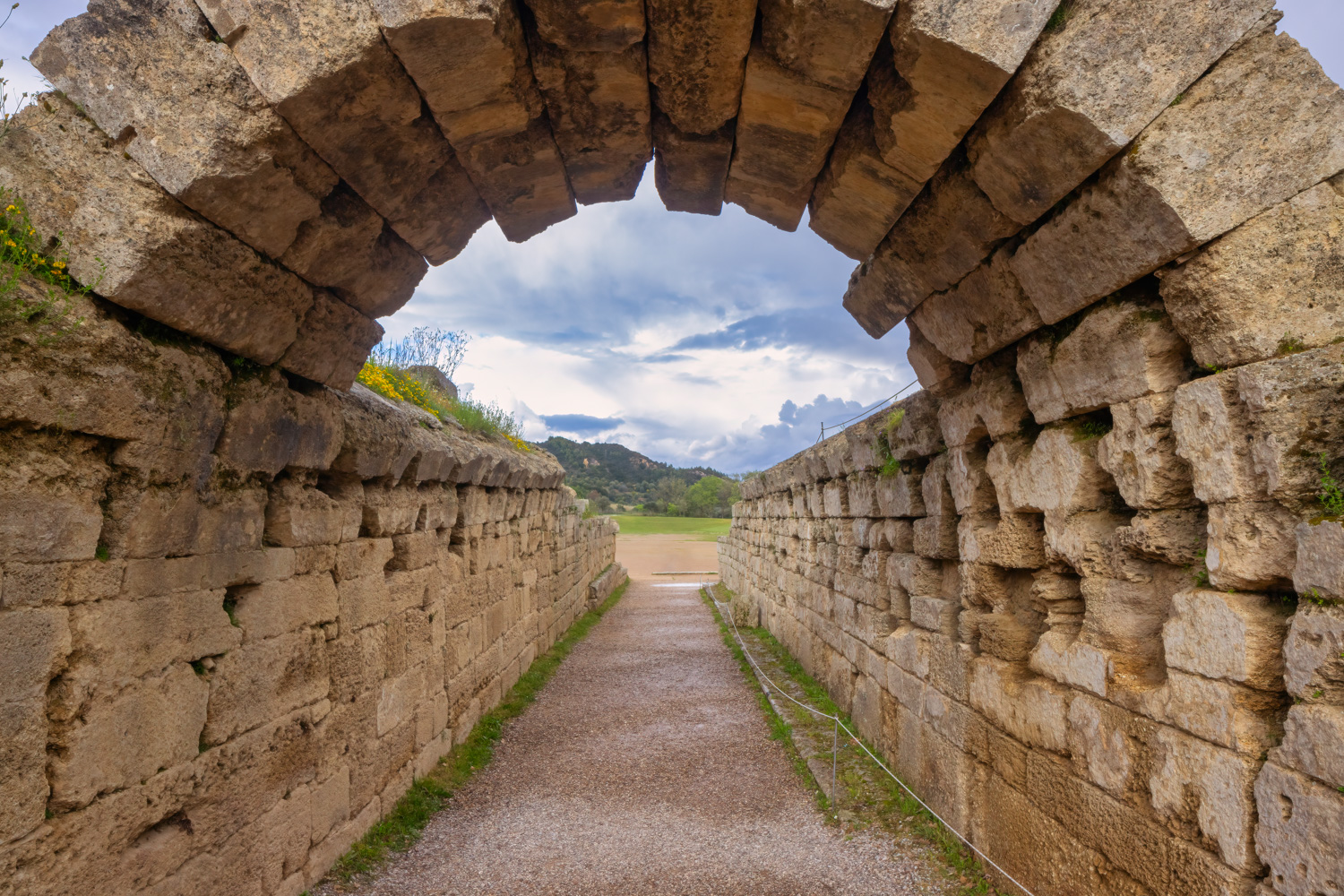
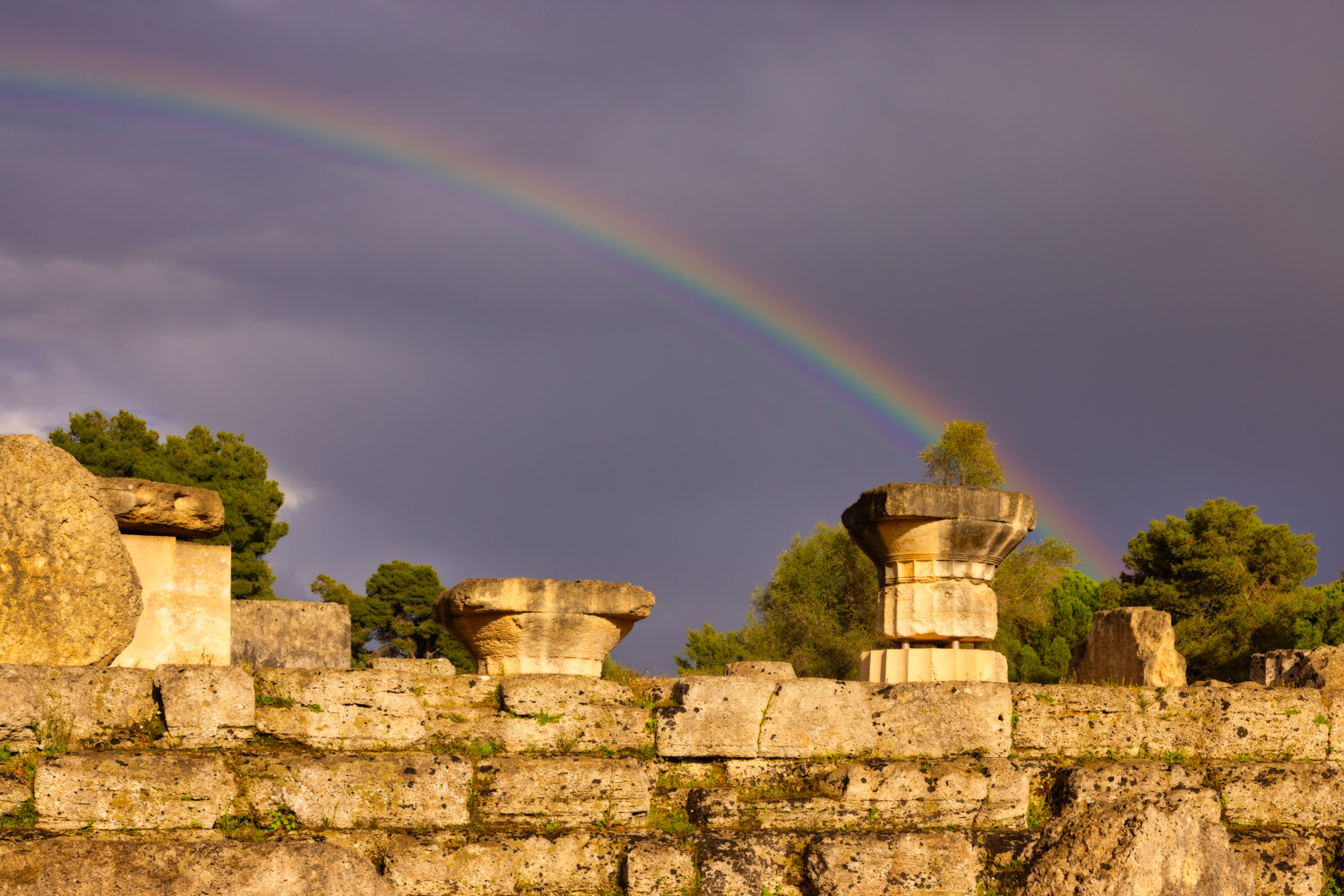
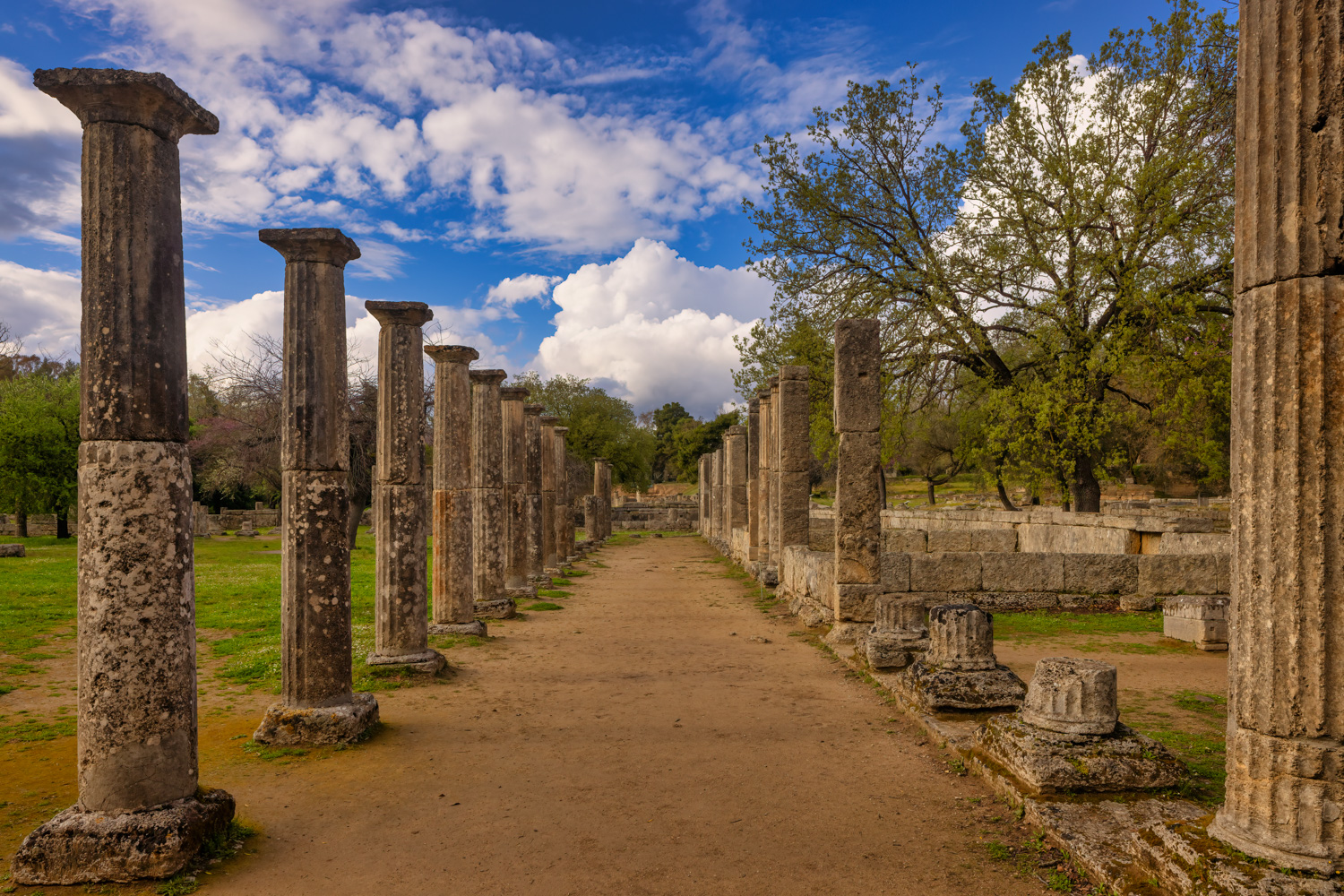
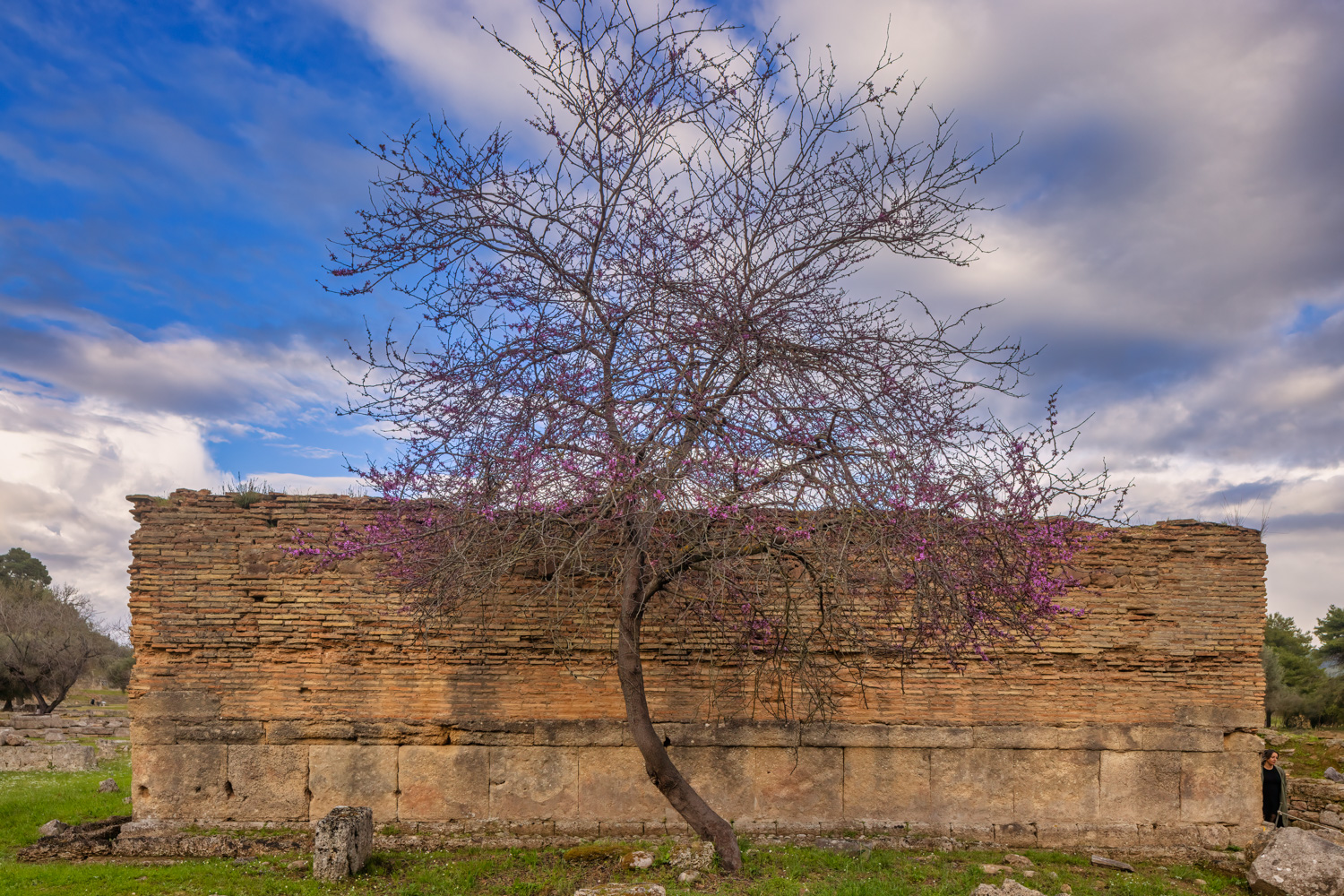
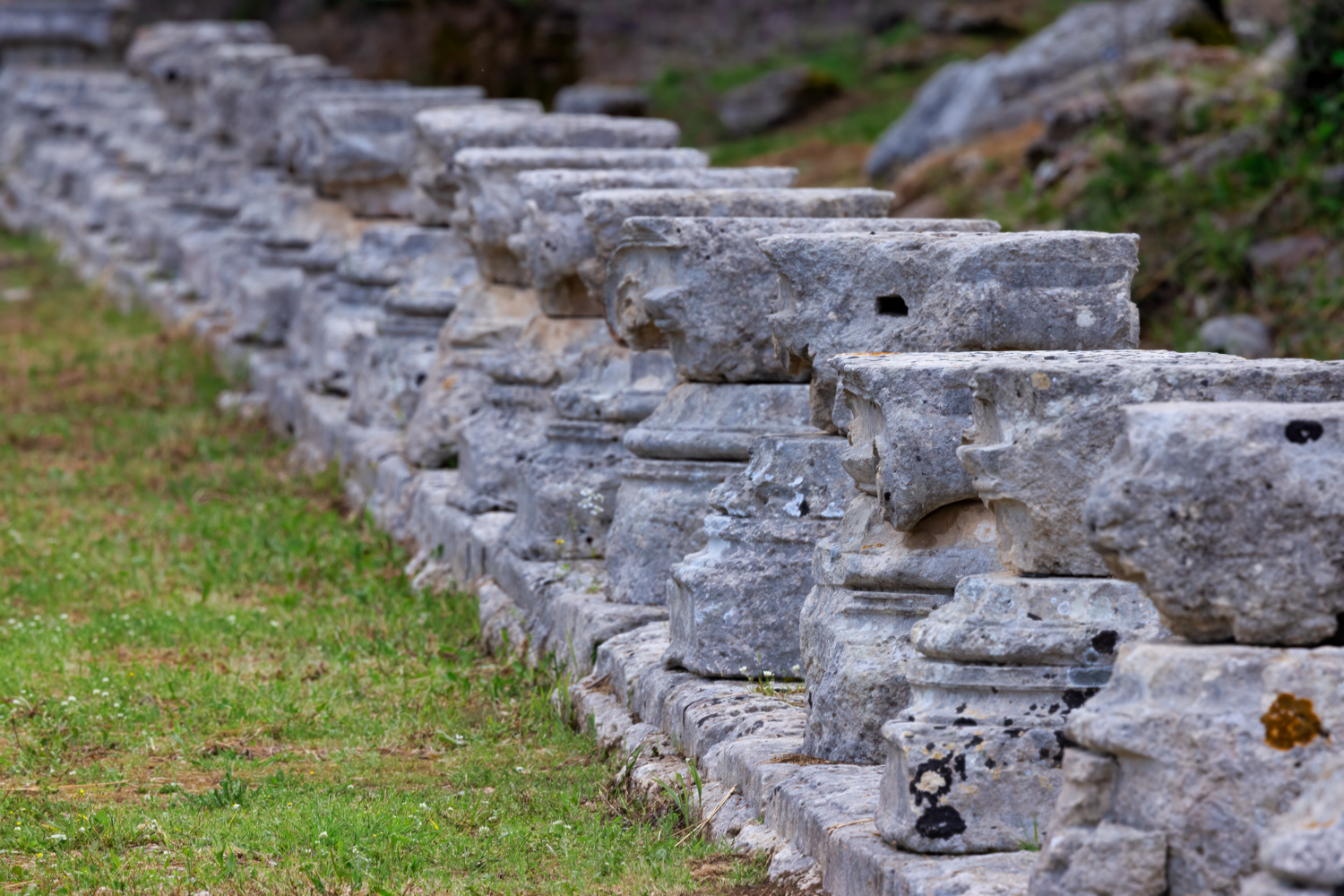


Athenaios wrote of Elis “Theopompos of Chios records that the vine was discovered in Olympia along the Alpheius river. He also reports that there is a sport in Elis eight stades from there, where the inhabitants at their Dionysia place lids on three empty bronze cauldrons in the presence of the visitors to the festival; seal them shut; and when they open them later, find them full of wine.”
Relevant Resources
van, A. P. G. (2004). A simple souvenir: Coins and medals of the Olympic Games. American Numismatic Society.
Approximate construction of the sanctuary at Olympia.
The first Olympic Games are held at Olympia.
The double stadion race is added to the Olympic Games.
The long distance race is added to the Olympic Games.
The pentathlon is added to the Olympic Games.
Boxing is added to the Olympic Games.
The four horse chariot race is added to the Olympic Games.
Pisa takes posession of Olympia.
The pankration, utilizing boxing and wrestling, is added to the Olympic Games.
Boys’ sports are added to the Olympic Games.
The boys’ pentathlon is held for the only year at the Olympic Games.
Boys’ boxing is added to the Olympic Games.
The Temple of Hera is constructed at Olympia.
Olympia comes under the jurisdiction of Elis.
The Olympic Stadium is constructed at Olympia.
Glaukos, a boxer from Karystos, wins in the Olympic Games.
The hoplite race is added to the Olympic Games.
The Olympic Stadium at Olympia is significantly remodeled.
The mule cart race is added to the Olympic Games.
The mare cart race is added to the Olympic Games.
The Prytaneion is constructed at Olympia.
The Temple of Zeus is constructed at Olympia.
The mare cart race and mule cart race are removed from the Olympic Games.
Phidias constructs the statue of Zeus, one of the seven ancient wonders of the world, at Olympia.
The two horse chariot race is added to the Olympic Games.
The Metroon is built at Olympia.
A competition for heralds and trumpeters is added to the Olympic Games.
The Echo Stoa is built at Olympia.
The Philippeion is constructed by either Philip II or Alexander III (then later) at Olympia.
The Leonidaion is built at Olympia to house visitors.
A vaulted archway to the Olympic Stadium is constructed in Olympia.
Sulla robs the artifacts of Olympia to pay for the war.
Sulla uses the Olympic Games at Olympia to celebrate his victory over Mithridates VI.
The Olympic Games at Olympia are postponed for two years under orders of Nero.
New baths are constructed in Olympia.
The Nympheum is added in Olympia.
An aqueduct is constructed for Olympia.
Olympia is sacked by invading tribes.
The last Olympic Games are held at Olympia.
Theodosius I orders the temples of Olympia destroyed.
An earthquake severely damages Olympia.
April 4
The author of this page tours Olympia, runs the ancient track, and photographs a rainbow behind the Temple of Zeus.